Kristen Pope worked in partnership with Visit Idaho to create this Travel Tip.
With bald eagles soaring overhead, osprey snagging fish from rivers, hummingbirds hovering near flowers and sandhill cranes migrating through each year, southeastern Idaho is prime territory for birders. In fact, the entire state of Idaho is packed with great places to see birds along the Idaho Birding Trail, which is divided into four different regions. The southeastern region alone features 47 different birding routes.
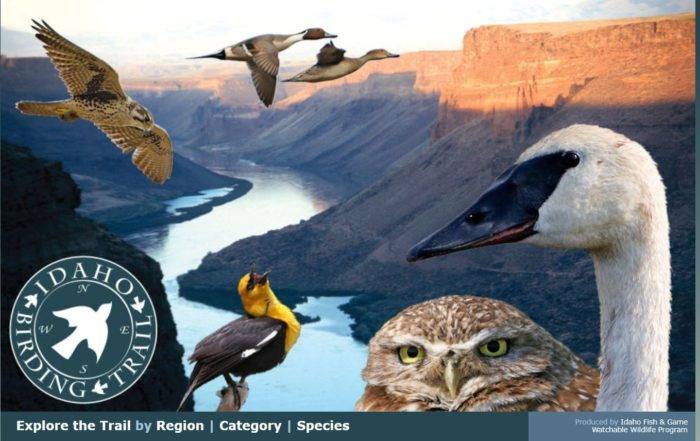
Specially Designated Birding Sites
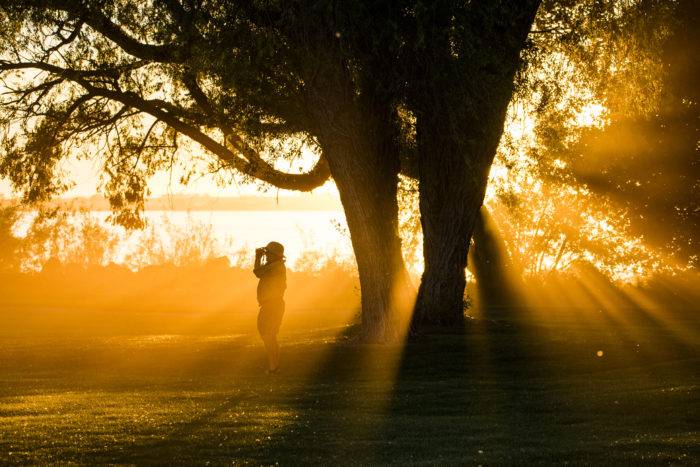
A number of birding sites and routes throughout the state have received special designations. Important Bird Areas are essential for bird conservation because they contain habitat that is critical for migration, nesting or wintering. Many of southeastern Idaho’s birding sites have received this important designation.
A couple dozen sites throughout the state have received the Idaho Birding Trail Blue Ribbon, which means they are considered the “best of the best” locations for birding. Southeastern Idaho contains several of these special Blue Ribbon sites, including Bear Lake National Wildlife Refuge, Harriman State Park, Minidoka National Wildlife Refuge/Lake Walcott State Park and the Springfield Bottoms.
Additionally, several sites are classified as “Listening Sites” where people can enjoy the sound of birdsong away from noise pollution. These locations are great for people with visual impairments and anyone who enjoys listening to the natural sounds of birds. These sites were selected for their quiet environments and the diversity and high concentration of species found there. Designated listening sites in the region include Harriman State Park, Minidoka National Wildlife Refuge/Lake Walcott State Park, Massacre Rocks State Park and the Mink Creek Subloop.
Where to Go Birding in Southeastern Idaho on the Idaho Birding Trail
With so many options, here are a few prime locations to pull out the binoculars, spotting scopes and zoom lenses, and see some of the special avian species of southeastern Idaho.
Bear Lake National Wildlife Refuge
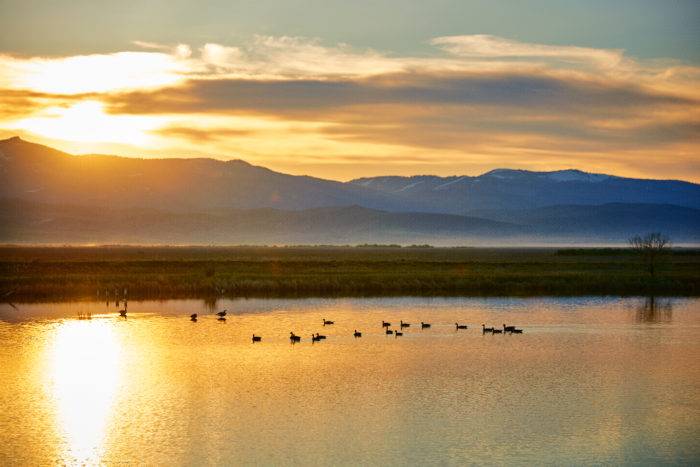
Located near Montpelier, Bear Lake National Wildlife Refuge is home to a wide array of birds on 18,000 acres. It was created in 1968 to provide a habitat for waterfowl, migratory species and other birds. Around 90 percent of the habitat is wetlands such as marshes, lakes and ponds. Here you can see all types of birds—from raptors and shorebirds to waterbirds and upland birds. Keep an eye out for snowy and cattle egrets, golden eagles, peregrine and prairie falcons, cliff and bank swallows, white-faced ibis and many more.
Curlew National Grassland
Near Malad City, this 48,000-acre grassland provides a rich habitat for a wide array of species. Over half of the area is sagebrush and scrubland, with over a third of the acreage agricultural land. One of the prime attractions at Curlew National Grassland is observing the mating dances of sharptail and sage grouse in the spring. In summer, scan the sagebrush and grasslands for sage thrashers and vesper sparrows. The fall migration features Canada and snow geese, and in winter, a number of species winter over, including song sparrows, killdeer and marsh wren. Sweeten Pond is an especially rich area to find shorebirds and waterfowl and be sure to look for ferruginous hawks all around.
Harriman State Park

This state park near Island Park follows the Henry’s Fork of the Snake River and provides diverse habitats on its 4,700 acres, including lodgepole pine forests, lakes, marshes and meadows. Winter is the best time to see large numbers of trumpeter swans, while summer and fall are key times for American white pelicans and double-crested cormorants. In spring, Silver Lake is a good place to spot common loon.
Massacre Rocks State Park
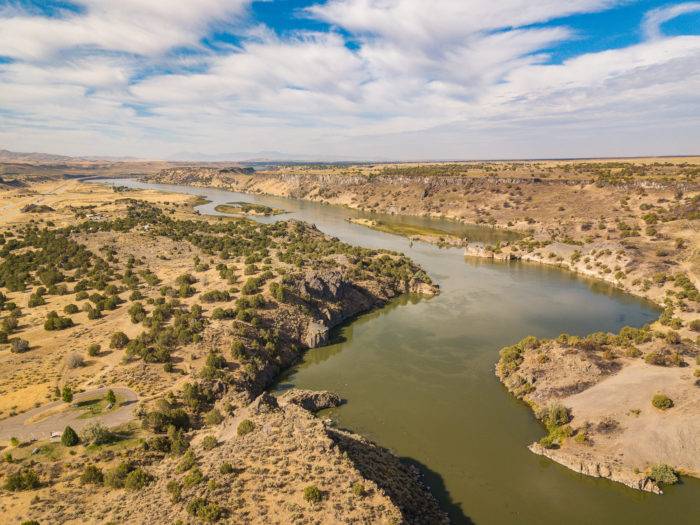
Nestled between Interstate 86 and the Snake River near American Falls, this park is just 990 acres, but it features prime habitat for birds. Peer among the cinder cones, pinyon-juniper and mountain mahogany to watch for black-capped chickadee, red-tailed hawks, pacific loon, juniper titmouse and many more. Spring and fall are the best times for birding here.
Minidoka National Wildlife Refuge/Lake Walcott State Park
At over 20,700 acres, this excellent birding site includes Lake Walcott as well as 25 miles of land beside the Snake River. Habitat includes not only the lake and river but also hills and even lava rock ledges. Lake Walcott State Park’s big draw is the large population of nesting American white pelicans each spring. Also watch for swans (both tundra and trumpeter), Swainson’s hawk, long-billed curlew and other species.
Teton River Subloop
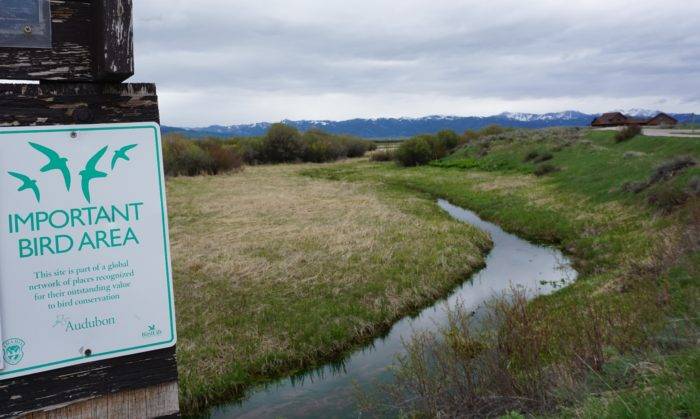
Near the towns of Driggs and Victor, this loop explores the backroads as it ventures down to Teton Creek. Watch for bald eagles, sandhill cranes by the river (in mid-September), trumpeter swans and more. Keep an eye out for great blue herons, osprey, American kestrels, belted kingfishers and even calliope hummingbirds in this diverse habitat.
The Springfield Bottoms
Scan these mudflats by the American Falls Reservoir near Springfield to spy an array of waterbirds, waterfowl, shorebirds, raptors and more. Spring is prime time for waterfowl migration (peaking in March), while fall is a great time for shorebirds. Tundra and trumpeter Swans, cattle Egrets and marbled godwits are just a few of the species found here.
More Resources
To learn more about birding in the region and local birds, be sure to check out the Snake River Audubon Society of eastern Idaho’s list of resources.
Feature image credit to Visit Idaho.
Kristen Pope is a freelance writer and editor who writes about outdoor adventure, science, conservation, and travel for NationalGeographic.com, Backpacker, Audubon.com, Western Confluence and Discover, just to name a few. Visit her at www.kepope.com.
Updated on November 28, 2023
Published on April 21, 2020
